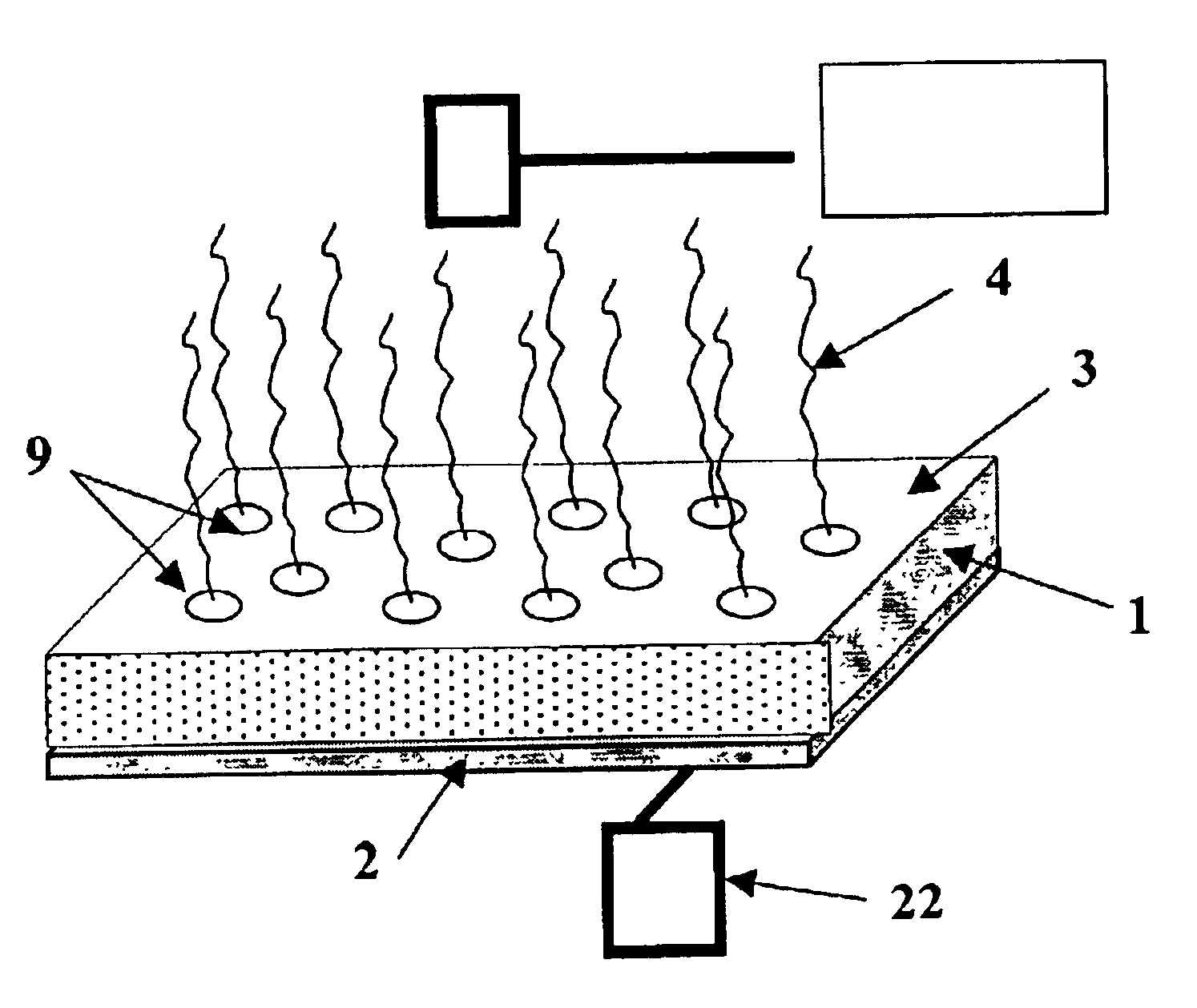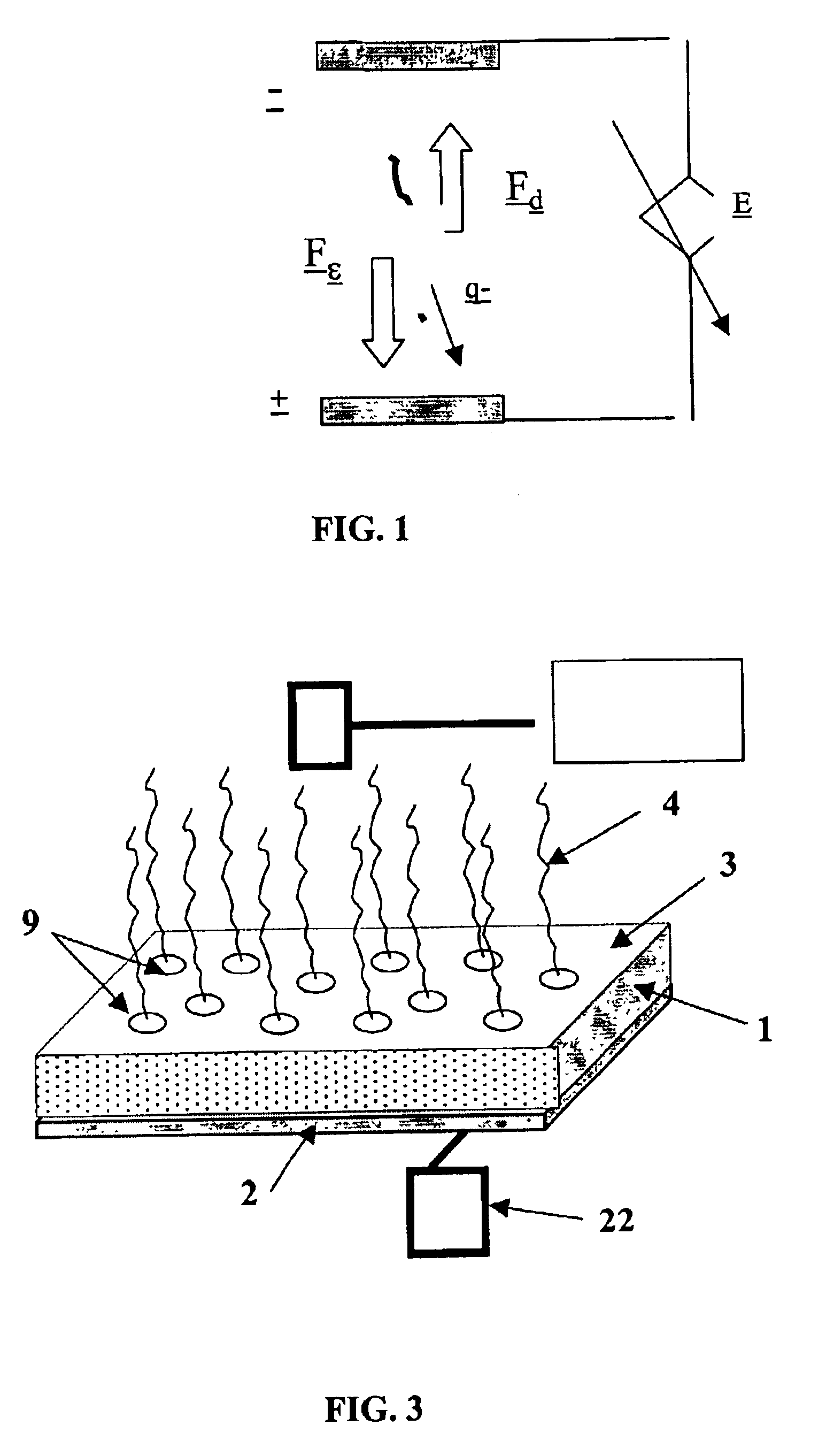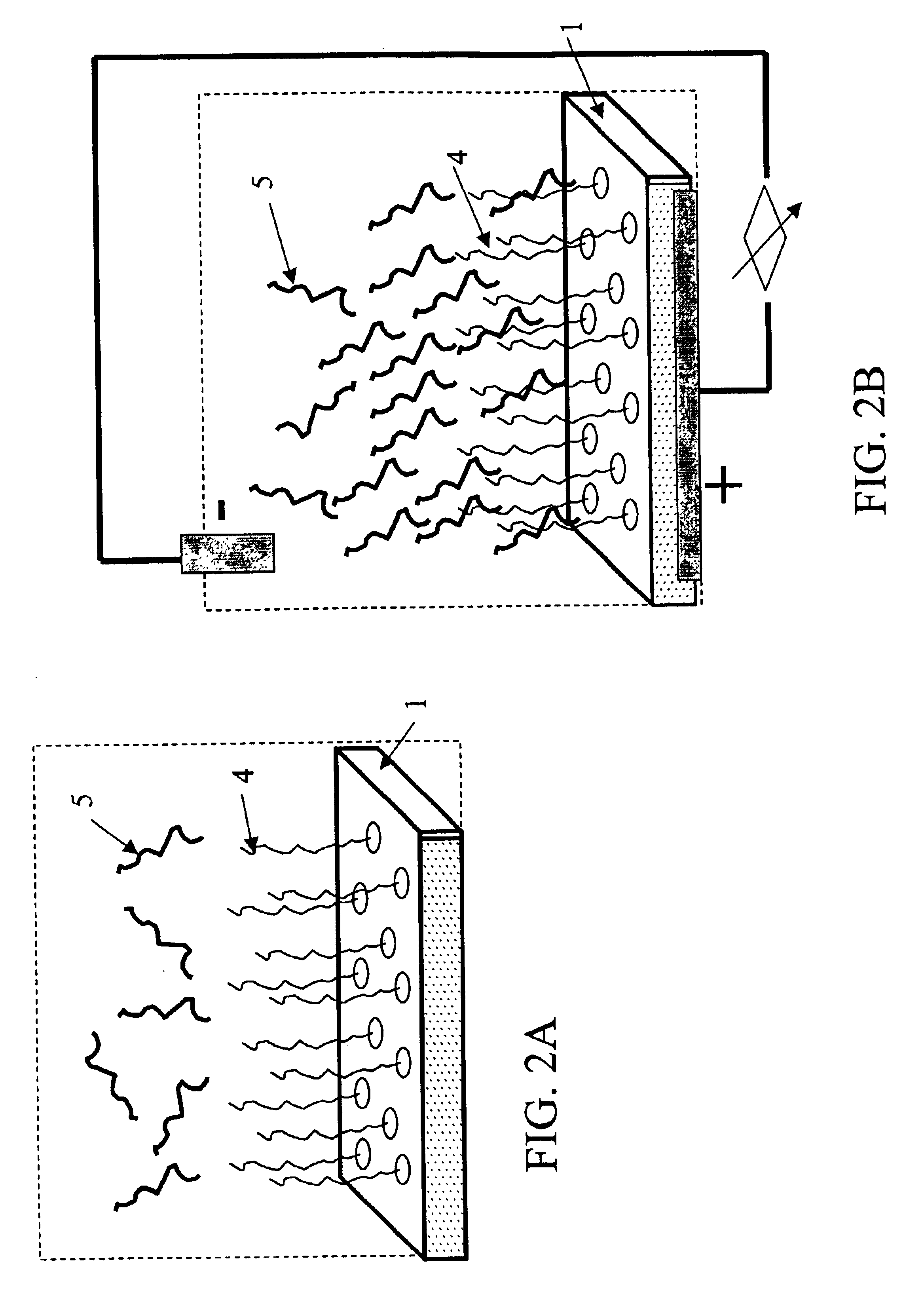Conductive microplate
a conductive microplate and micro-plate technology, applied in the field of conductive microplates, can solve the problems of increasing the likelihood of including other cell types, limiting the diffusion of arrays, and extending the hybridization time, so as to achieve fast and efficient binding and high probe biomolecule density
- Summary
- Abstract
- Description
- Claims
- Application Information
AI Technical Summary
Benefits of technology
Problems solved by technology
Method used
Image
Examples
example 1
Activating Porous Substrate
Polypropylene substrate was surface functionalized with amine groups using a glowing gas chemical plasma process employing radio frequency plasma deposition or RFPD under conditions described in the commonly assigned U.S. Pat. No. 5,583,211. Surface amines were converted to carboxyl groups using succinic anhydride. The support was rinsed in solvent to remove moisture and allowed to dry. DAST reagent in anhydrous solvent (˜10% v / v) was applied to the support and incubated for 1-3 hours at ambient temperature in a dry, closed container. After the incubation, the support was rinsed in solvent and dried. Acyl fluoride-activated substrate was stored dry at −20° C. until needed.
example 2
Covalent Attachment of Probe DNA to the Activated Substrate
A solution of cDNA (20 nL of 1 nM stock solution in 50 mM sodium carbonate-bicarbonate buffer, pH 9) was printed on the surface of activated porous substrate prepared in accordance with Example 1. The printing was conducted using a Biomek 384-pin HDRT (high-density replicating tool). The printing was carried out without any modification of the cDNA. The cDNA-printed spots were allowed to react with the substrate for 1 hour in a humidified chamber held at 25° C. Active fluoride groups remaining on the surface were quenched in ethanol for 2 hours at ambient temperature. Biotin-labeled cDNA targets of actin, G3PDH, and TNF (e.g., 1 μl of a 41 nM stock solution diluted to a final volume of 150 μL; 41 fmoles applied ˜246×108 molecules) were hybridized (1 hour, 60° C., 2×SSC, 0.01% SDS) to the microarray. Subsequently, streptavidin-alkaline phosphatase conjugate was applied following rinsing; and signal was developed using ELF rea...
example 3
Electrophoresis Assisted Hybridization
A porous membrane strip of ultra-high molecular weight polyethylene with cDNA probes immobilized on one side was mounted near the positive electrode of a slab gel electrophoresis apparatus. The strip was soaked with denaturant (0.5 M NaOH, 0.15 M NaCl) and incubated for 15 minutes. Residual denaturant was removed from the strip, which was then rinsed, and the electrophoresis apparatus flooded with running buffer (1×TBE). Target cDNA (actin) was boiled, then placed on ice and subsequently mixed with gel loading buffer (Digene Corp., Betsville, Md.) containing running dye. The cDNA target solution was placed approximately 0.5 cm away from the porous strip. Voltage was applied across the strip (274 V, 122 mA) and maintained for 5 minutes after the dye front had reached the strip. Power was turned off and hybridization was allowed to proceed for 5 minutes. The strip was removed from the apparatus and the signal developed using streptavidin-alkaline ...
PUM
| Property | Measurement | Unit |
|---|---|---|
| diameter | aaaaa | aaaaa |
| voltage | aaaaa | aaaaa |
| electrical | aaaaa | aaaaa |
Abstract
Description
Claims
Application Information
 Login to View More
Login to View More - R&D
- Intellectual Property
- Life Sciences
- Materials
- Tech Scout
- Unparalleled Data Quality
- Higher Quality Content
- 60% Fewer Hallucinations
Browse by: Latest US Patents, China's latest patents, Technical Efficacy Thesaurus, Application Domain, Technology Topic, Popular Technical Reports.
© 2025 PatSnap. All rights reserved.Legal|Privacy policy|Modern Slavery Act Transparency Statement|Sitemap|About US| Contact US: help@patsnap.com



